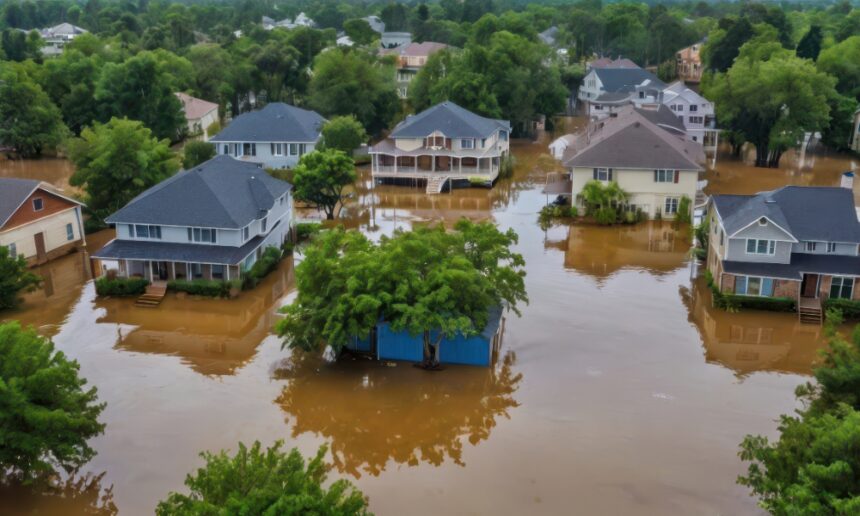Article – As floodwaters recede across parts of British Columbia and Ontario, thousands of Canadians face the daunting task of navigating insurance claims for damaged homes and vehicles. With Environment Canada forecasting more severe weather patterns this spring, the Insurance Bureau of Canada (IBC) has stepped forward with practical guidance for policyholders.
“We’re seeing a clear pattern where seasonal flooding is becoming more severe and impacting regions that historically weren’t considered high-risk,” explains Craig Stewart, Vice President of Federal Affairs at IBC. “Many Canadians are discovering gaps in their coverage only after water enters their basement.”
The situation highlights a troubling reality in our insurance landscape. According to recent IBC data, approximately 40% of homeowners assume their standard home insurance policies cover overland flooding, when most require specific endorsements. This misconception has left many families financially vulnerable during recovery efforts.
For those currently dealing with flood damage, the IBC recommends documenting everything before cleanup begins. Take photos and videos of all affected areas, make detailed lists of damaged items, and save receipts for emergency repairs and temporary accommodations. These records provide crucial evidence for claims adjusters who determine compensation amounts.
The claims process itself often becomes a source of stress for disaster-affected residents. Susan Phillips from Kamloops experienced this firsthand after last year’s flooding. “The paperwork seemed endless, and I wasn’t sure what qualified for coverage. Having clear guidance would have saved me weeks of anxiety,” she recalls.
In response to such feedback, the IBC has created a simplified claims roadmap. First, contact your insurance representative promptly to report damage. Second, provide detailed documentation of losses. Third, keep damaged items until the adjuster has completed their assessment unless these items pose health hazards.
Auto insurance claims present their own challenges. Motorists should understand that comprehensive or specified perils coverage typically covers flood damage to vehicles, not basic mandatory coverage. The IBC advises against starting flood-damaged vehicles, as this could cause additional harm to engines and electrical systems.
Recent data from the Property and Casualty Insurance Compensation Corporation reveals that water damage now accounts for approximately 60% of home insurance claims across Canada, far surpassing fire and theft. This shift has prompted many insurers to adjust their policies and premium structures.
“We’re entering a new era where climate resilience must be built into both infrastructure planning and insurance products,” notes Steve Kee, Director of Media Relations at IBC. “The industry is adapting, but consumers need to actively review their policies annually to understand what’s covered.”
For those shopping for new insurance policies, the IBC suggests asking specific questions about coverage for sewer backup, overland flooding, and groundwater seepage. These distinct types of water damage often have different coverage requirements and limits.
Provincial differences further complicate matters. Quebec has made flood insurance more accessible through government partnerships with insurers, while Alberta has implemented specific flood mitigation requirements for high-risk areas. Meanwhile, British Columbia recently launched a provincial flood strategy that includes insurance reform recommendations.
“The patchwork approach across provinces creates confusion,” admits Kerry Patterson, an independent insurance broker in Vancouver. “Clients moving between provinces often assume coverage works the same way everywhere.”
Financial assistance programs exist for those without adequate insurance coverage, though these programs have limitations. Public Safety Canada administers the Disaster Financial Assistance Arrangements (DFAA), which provides funds to provinces for disaster recovery. However, these programs typically cover only uninsurable losses and essential items.
“Government assistance shouldn’t be viewed as a replacement for proper insurance,” cautions Stewart. “These programs offer basic help but rarely cover the full cost of rebuilding or replacing possessions.”
Climate scientists at the University of Waterloo’s Intact Centre on Climate Adaptation suggest that homeowners take proactive measures regardless of insurance status. Installing backwater valves, maintaining eavestroughs, grading property away from foundations, and waterproofing basement walls can significantly reduce flood risk.
As extreme weather events become more frequent, the insurance industry faces pressure to develop more accessible coverage options. Some companies now offer partial coverage with varying deductibles based on risk assessment, making protection more affordable for those in flood-prone areas.
For Canadians currently dealing with flood damage, the immediate priority remains documenting losses and initiating claims. The IBC maintains a consumer information hotline (1-844-2ask-IBC) where policyholders can get clarification about coverage and claims processes specific to their situation.
The road to recovery after flooding is never easy, but understanding the claims process represents an important first step toward rebuilding. As spring brings uncertain weather patterns, now might be the perfect time for all Canadians to review their policies and ask the critical question: am I really covered?






